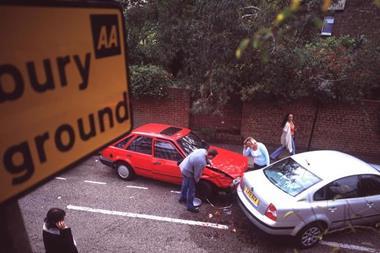Insurers want to pay less for cars supplied after an accident, while the suppliers – credit hire companies – want more
Credit hire companies won a small battle against insurers last week, when the industry agreed to increase their rates by 3.5% for 2008. But with 2009 rates still to be decided, the war is far from over.
Credit hire companies, which provide rental services and vehicles to collision victims and recover the costs from the liable insurer, have been slugging it out with their paymasters for years. Their fees are set according to a document – called the general terms of agreement (GTA) – which is overseen by the ABI. But the deal does not properly set out how and when the rates should be reviewed – and while credit hire companies think they are getting too little, insurers claim they are already paying too much.
The 2008 agreement is more than the insurers wanted to pay and less than the credit hire companies had hoped to receive. “This is a good old-fashioned compromise,” said Andrew Welch, partner at law firm Stephensons. “No one is especially happy. The insurers wanted a decrease and the Accident Management Association wanted an increase of 10% or more to reflect inflation. The compromise was arrived at to keep the GTA in existence.”
Despite their differences, both sides are concerned that if the agreement collapses, there will be lengthy and costly legal disputes over fees.
“I think a lot of people on both sides of the fence take the view that it’s better to be in the GTA than to let it fall apart,” said Welch.
The GTA, which has been in use for 10 years, was designed to end the previous high levels of litigation in the claims process. It was registered with the Office of Fair Trading by the ABI and provides a framework for settling claims for the cost of replacement vehicles.
But soon after the agreement was hammered out, the credit hire organisations split into two camps. Traditional organisations were represented by the Accident Management Association (AMA). But a new group emerged and decided to work more closely with the insurance industry, providing discounts to insurers that had bulk buying power. These companies are represented by the National Association of Credit Hire Operators.
Both sides use the GTA to conduct negotiations but the detail that is missing from the agreement – particularly the lack of a formula for determining future rate increases – remains contentious.
There is a lot left to fight for during re-negotiations for 2009 in September.
Ralph Ferguson, chairman of the National Association of Credit Hire Operators, said his organisation was quite happy with the 3.5% increase.
“It puts the GTA back on track. The AMA is trying to paint a black picture of this while we’re painting a very positive picture.”
“Cost is spiralling out of control and Allianz intends to reverse the trend. I hope this can be achieved through collaboration and not conflict, but the ball is firmly in the credit hire organisations’ court.
Bob Rabbitts, Allianz
One of the companies that deals with credit hire operators, RBS Insurance, said it was a positive step that rates for 2008 had been agreed, but there was “a significant amount of work to do in determining GTA governance, future rate reviews and exploring improved methods of working. RBS Insurance is committed to supporting this activity”.
Bob Rabbitts, technical claims manager at Allianz Insurance, agreed that the conclusion of the rate review was good news, but added there were underlying issues that are causing the insurance industry concern.
“Hire periods often seem to be longer than necessary. We speak direct to third parties who tell us that vehicles are delivered before they really need them and collection at the end of the hire is sometimes delayed. Some also tell us that a credit hire car has been more or less imposed upon them, even though they would have been happy to make other arrangements,” he said.
“Allianz has proactive claims processes in place to promptly supply replacement vehicles to non-fault third parties, who have a justifiable need of alternative transport, at competitive rates. However, we are often not allowed a reasonable period of time to make those arrangements before credit hire is in place, at a much greater cost. It is interesting that the average hire period is also significantly lower when we have been able to organise it.”
Allianz chief executive Andrew Torrance has blamed the credit hire industry for inflating the insurer’s retail business combined ratio to 105.7% in the first quarter of 2008. He said the company was taking action to minimise motor claims inflation caused by credit hire, which resulted in an increase of about 2 percentage points in combined ratio for the retail division in 2007.
So what future does the GTA have?
The AMA has said that by the end of September, improved governance arrangements for the protocol should be in place, along with a potential formula to decide future rates. The appointment of a third-party arbitrator or independent committee has been mooted, but this would entail further arguments about who would be chosen.
“I hope that in future credit hire organisations might feel able to work sensibly with us to ensure that expense is properly controlled and managed,” said Rabbitts.
“Cost is spiralling out of control and, one way or another, Allianz intends to reverse the trend. I hope this can be achieved through collaboration and not conflict but, as far as I’m concerned, the ball is firmly in the credit hire organisations’ court.”
Credit hire outfits evidently think otherwise. And so the war continues.
What the GTA does:
States tariffs for daily hire rates on vehicles depending on the make, model and year.
Specifies vehicles must be delivered to the not-at-fault victims within four hours of the collision.
States the agreed rate must be paid to the credit hire company by the at-fault insurer within 90 days.



































